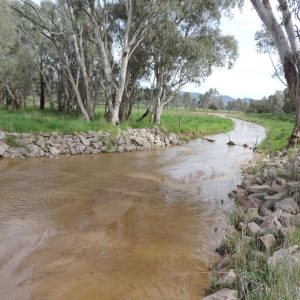Holbrook Self Drive Ecotour
Loop 1: Four Mile Lane (83km)

1: Ian Geddes Bush Reserve – This lovely reserve follows the Ten Mile Creek in town along a path through natural bushland. This reserve is home to the endangered Squirrel Glider and many birds can be seen. Watch out for Dollarbirds in the Summer.
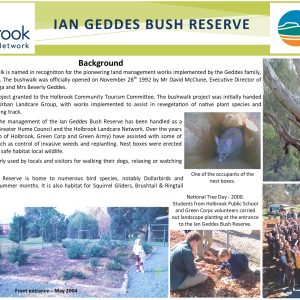
2: Holbrook Common and Pony Club TSR – These areas of Yellow Box – Blakely’s Redgum Woodland are remnants of an Endangered Ecological Community that covered much of the floodplain and slopes of this area. The mature trees here are estimated to be over 150 years, and contain numerous hollows that are important for many species of possum, owls and parrots. It is thought that this ecosystem originally had a native understorey and ground layer consisting of native grasses such as Kangaroo Grass and Tussock Grass (Poa sp.) with a range of small shrubs, forbs and groundcovers, which has now mostly been lost. In the past it has been a breeding site for Regent Honeyeaters, as well as home to the threatened Squirrel Glider and many endangered woodland birds, including the Grey-crowned Babbler.

3: Glider Poles – The poles seen along the Hume Highway are in place to ensure the safety of gliders and other mammals in the Holbrook region, which use them to safely cross the highway where there are no trees. You will also see rope bridges in places, for use by non gliding possums.
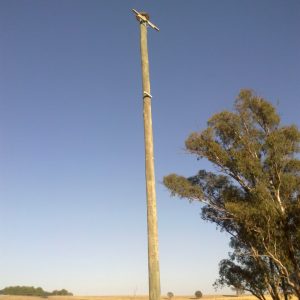
4: Geddes Family’s Farm Forestry Site – In 2002 the Geddes family planted 9,500 seedlings in 11 hectares as part of a farm forestry program funded by Heartlands. The aim of the site was to use more water in an area that was prone to waterlogging. The site has recently undergone pruning to reduce the knots found in the timber, making it suitable for timber products such furniture and flooring.

5: Wearn Family’s TSR – Travelling Stock Reserves (TSR) were once used by drovers to water and rest their stock on long droving trips. TSR’s are valuable examples of the vegetation that existed before large scale clearing occurred and provide valuable corridors that allow wildlife to move through the environment. The site contains revegetation planting as well as a farm forestry site.
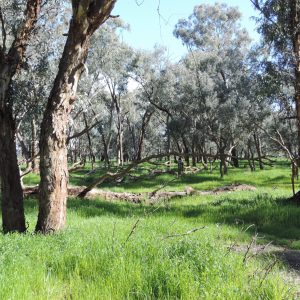
6: Manoora Sanctuary – Manoora Sanctuary was created by Mrs Bev Geddes, a long time field naturalist and lover of Holbrook’s natural environment. Bev dedicated 300ha to nature conservation. A predator proof fence has been constructed around areas of the site, to ensure the survival of ground dwelling species such as the Yellow-footed Antechinus and ground foraging birds such as the Speckled Warbler.
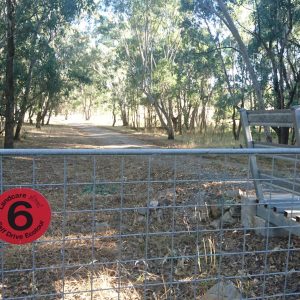
7: Lankeys Creek – Lankeys Creek is a permanent, rocky bed stream that is home to the endangered Booroolong Frog. This frog is the only true riverine frog in our area, requiring the rocky crevices to breed and are threatened by increased erosion and sediment in the stream and willow invasion. There has been extensive restoration work on rocky streams here and across the Upper Murray to ensure the future of this frog. There is a parking area and picnic table at the Hume and Hovell track rest area approximately 8km southeast towards Jingellic.
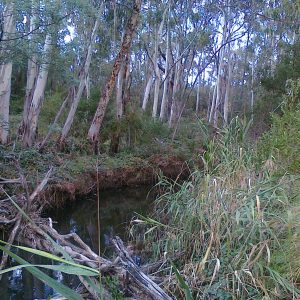
8: Scent Bottle Creek – Scent Bottle Creek has been severely impacted by erosion and in 2003 a rehabilitation project was undertaken involving several landholders and organisations. This aimed to halt erosion of fragile soils and improve water quality downstream by fencing the creek to prevent nutrients and sediment escaping into the creek. Strategic earthworks, constructed wetlands and fencing to exclude livestock helped stabilise the creek banks. In creek systems like this the endangered Southern Pygmy Perch can be found.
